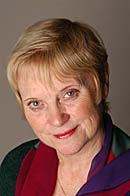For centuries, entrepreneurs and advertisers have spent time and money searching for the right words to motivate as many people as possible to buy into and buy completely untried products.
In 1768, Haydn's librettist, Carlo Goldoni, devoted a whole opera - "The Apothcary" - to extolling Rhubarb mixed with Senna as a novel cure all.
In 1850, P.T. Barnum brought Jenny Lind, a Swedish opera singer dubbed "The Swedish Nightingale", to the United States for a sell-out tour that made both a fortune – despite the fact that nobody in America had ever heard her voice. So successful was Barnham's marketing-speak that more than 30,000 people showed up to greet the arrival of her ship in New York harbour – and so the modern cult of the celebrity was born.
In 1978, "Walkman" would have been a poorly-typed sentence needing a space between its two words and lacking a full stop. But a year later, the effort and energy Sony had put into finding a pithy composite of words immediately recognizable - even to people with the most shaky knowledge of English - won their innovative product an instant market.
Of course pithy phrases also have the power to explode the myth of a product's worth - as the boss of Ratner's jewelers discovered in 1991 when he made a speech in which he described the products his chain of stores sold as "total crap". After the speech, the value of his firm fell by around £500 million, almost leading to its collapse.
Yet, Lo! - In 2007 another typo ridden sentence took the market by storm and iPhone became the latest 'must have' product From all of the above it is clear why the ideal for organisational and entrepreneurial success has always been to find language that will resonate strongly with a target audience and invoke an appropriate emotional response. Neither of these things can happen, however, unless the words chosen are current to the culture and times in which they are set.
Societal change has always impinged on language, but since the mid-1960s, it has romped away at an unusually fast pace. Just think how recently that only birds tweeted and pods were full of peas!
This is why the forty year-old sculptor, Eva Rothschild, interviewed on BBC radio last month, remarked that she couldn't understand how it was that Dame Barbara Hepworth – when writing a description of her own way of working – had commented that "a sculptor carves because he must."
"Why," asked a genuinely puzzled Eva, "should a woman so important in her own right use the personal pronoun, he?" Her interviewer could not enlighten her.
Yet any person schooled before Eva was born would have been able to tell her that the universally accepted rule for composition until the mid 'sixties was: "for he, read she."
How could a woman - who has only ever lived during a period when equality was considered the norm - understand that a woman as powerfully independent as Hepworth was bound by - and accepting of - the norms of her own times.
No! These days, it isn't only attitudes and fashions from previous centuries that make meaning difficult to grasp. It has to do with the current rate of language change which - though it doesn't quite keep up to the speed of transistor to microprocessor changes that Moore's Law predicts - is -extraordinarily fast.
If we presenters, trainers and coaches are to have any hope of continuing to get ideas across to the audiences we have to address, we must get out and Walk man, Talk man and Look man - because unless we keep on familiarising ourselves with the changing cultures of the organisations we serve and keep abreast of the mores of the societies in which those cultures are embedded we shall - like the rhubarb and senna tincture - be left on the shelf.
